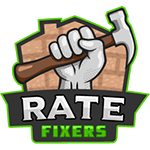
The Language of Lending: Confusing Home Mortgage Terminology Explained
Buying a home can be a daunting process, and confusing mortgage terminology only adds to a first-time buyer’s frustration. Taking the time to understand the language of lending, however, can significantly reduce the amount of stress involved in the home-buying process. Knowing the meaning of the terms and abbreviations below will give any buyer more confidence as the process unfolds.
LTV
This abbreviation stands for loan-to value, which is the percentage of a home’s sale price that will be financed. For example, the LTV on a $100,000 home purchase with 20 percent down is 80 percent. Home purchases with lower LTVs typically come with lower interest rates, as well, because they represent a lower lending risk for banks and mortgage brokers.
Conforming Loan
This term simply refers to a mortgage loan that matches set loan standards; for example, a loan that meets Freddie Mac guidelines for resale.
Origination Fee
This fee is sometimes charged by a lender for writing the paperwork to originate a loan. Most often, the fee will go up or down based on a percent of the loan amount, though it may also be a flat number for some lenders.
Rate Lock
Mortgage rates, like the market, change on a daily basis. Noting these fluctuations, many lenders will offer the option to “rate lock” a particular interest rate for a set number of days, sometimes up to 90 days. This can be especially beneficial if rates are steadily rising, but it may also mean an extra rate lock fee for the consumer.
Although this list represents only a few of the many terms of the mortgage trade, it’s always in a consumer’s interest to ask questions if terminology is unclear. Purchasing a home is a serious financial transaction, and it’s important to have a true understanding of a loan’s terms before signing on the dotted line.
Image via Flickr/Ryan
